- News
- Reviews
- Bikes
- Components
- Bar tape & grips
- Bottom brackets
- Brake & gear cables
- Brake & STI levers
- Brake pads & spares
- Brakes
- Cassettes & freewheels
- Chains
- Chainsets & chainrings
- Derailleurs - front
- Derailleurs - rear
- Forks
- Gear levers & shifters
- Groupsets
- Handlebars & extensions
- Headsets
- Hubs
- Inner tubes
- Pedals
- Quick releases & skewers
- Saddles
- Seatposts
- Stems
- Wheels
- Tyres
- Tubeless valves
- Accessories
- Accessories - misc
- Computer mounts
- Bags
- Bar ends
- Bike bags & cases
- Bottle cages
- Bottles
- Cameras
- Car racks
- Child seats
- Computers
- Glasses
- GPS units
- Helmets
- Lights - front
- Lights - rear
- Lights - sets
- Locks
- Mirrors
- Mudguards
- Racks
- Pumps & CO2 inflators
- Puncture kits
- Reflectives
- Smart watches
- Stands and racks
- Trailers
- Clothing
- Health, fitness and nutrition
- Tools and workshop
- Miscellaneous
- Buyers Guides
- Features
- Forum
- Recommends
- Podcast
TECH NEWS
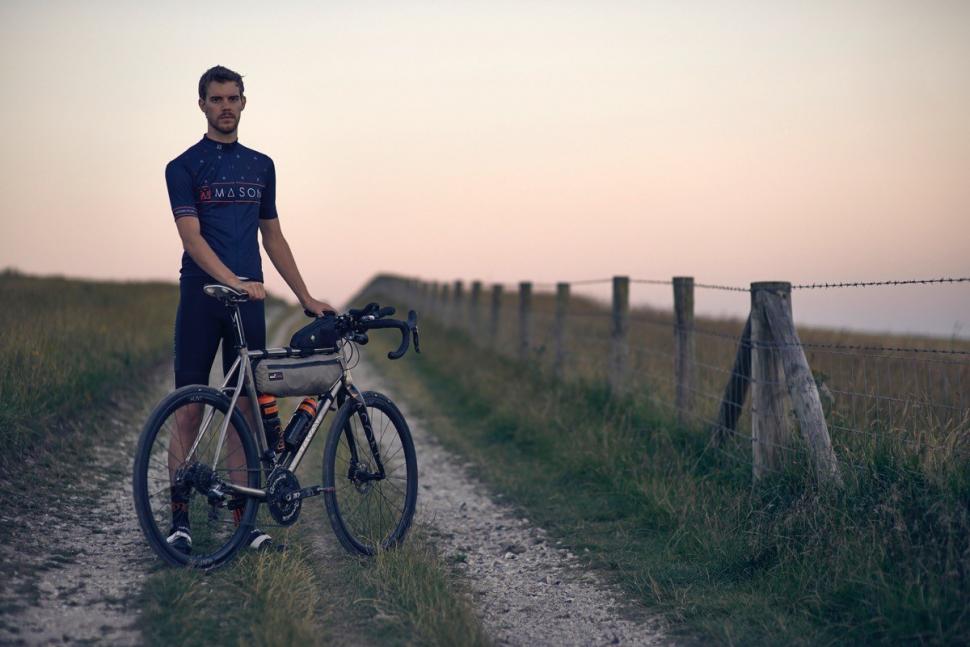 Photo: Jonty Tacon
Photo: Jonty TaconTranscontinental bike race: Josh Ibbett’s bike and equipment
The fourth Transcontinental bike race starts in Geraardsbergen, Belgium, at 10pm tomorrow (Friday 29 July) evening, with last year’s winner Josh Ibbett being among the favourites to arrive first at the finish in Turkey.
Josh has shown us the equipment that he’ll be using over the coming days (he finished in just under 10 days last time). There’s really not a lot of it. The all-in weight is 12.5kg (27.6lb) while Josh himself weighs 72kg (11st 5lb).
Over to Josh for all the details.
The significance of the large number 3 in the picture, by the way, is that this is Josh’s third Transcontinental.
1 Bike
The Mason Bokeh Ti bike is light and comfortable, developed for ‘FastFar’ riding.
https://masoncycles.cc/
[The Mason Bokeh Ti detail shots in the pictures don't show the bike built up as Josh will be riding it across Europe]
Check out road.cc’s exclusive sneak peek of the Mason Cycles Bokeh and Bokeh Ti.
2 Groupset
It’s a Dura-Ace Di2 Disc groupset with an 11-28 cassette. Di2 means I have light and easy shifting. I carry the battery charger for a mid race top up. The 28-tooth sprocket is for the Alps and the Dolomites.
www.shimano.co.uk
3 Chainset
I use a Rotor 3D chainset with 52/36-tooth Q-Rings [not the Shimano Ultegra chainset in one of the pictures above]. I think these help when I am super tired. They keep the pedal stroke smooth especially when the cadence drops in the last part of the race. I also find that they help on the climbs. Going for a mid compact is a good compromise between a standard and a compact chainset. It’s not too hard and, on the other hand, there’s no excuse to go really easy!
http://rotorbike.com
4 Wheels
These are Hunt 38 Carbon Wide Disc wheels [Josh works for Hunt Bike Wheels] with Schwalbe One Pro 28mm tyres. Light and fast, these are a great balance of weight and aerodynamics. The tubeless tyres roll fast and offer puncture resistance. I also carry two spare tubes and a plug kit just in case!
www.huntbikewheels.com
5 Handlebar and stem
I use a USE Ultimate bar and stem. I’ve gone for a Summit Carbon bar to shift some weight for the mountains.
www.ultimatesportsengineering.com
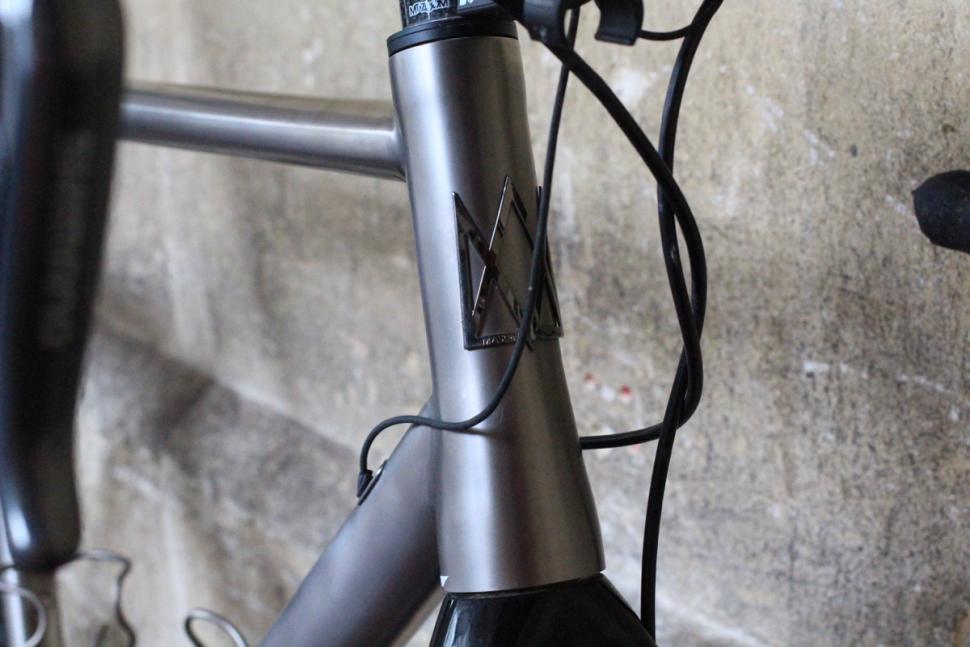
6 Saddle
It’s a Fabric Scoop Flat saddle with custom graphics. This is comfy in the time trial position and when climbing.
http://fabric.cc
7 Lights
I have an Exposure Toro and Joystick for front lighting, and a Blaze for the rear.
www.exposurelights.com
8 GPS
I use a Garmin eTrex 30 that runs on AA batteries. This GPS is a Transcontinental veteran that has also travelled to New Zealand twice and to Southeast Asia. It just keeps going! AA batteries can be bought all across the world so there’s no excuse for getting lost!
www.garmin.com
9 Bolts, spacers, headset cap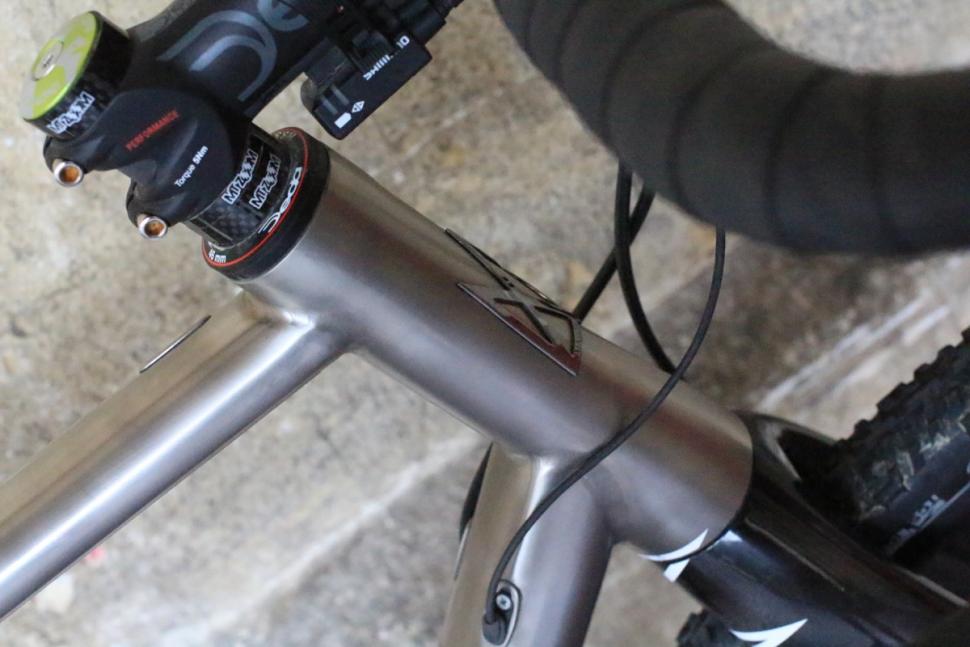
I use Mount Zoom spacers, ti bolts and headset cap. The tiny weight savings all add up!
http://mtzoom.com/
10 Frame bags
These are from Miss Grape, the same as I used last year. The perfect size to fit my kit and my frame, The top tube bag houses my first aid kit, suncream, dry shower gel, skin repair gel, lube and charging cables.
www.missgrape.net
11 Jacket
The Gore One is the most incredible rain jacket I’ve ever used. It’s super warm, super waterproof, and the pack size is tiny.
www.goreapparel.co.uk
12 Gilet
My Gore Active gilet is water resistant, windproof and it has a tiny pack size.
www.goreapparel.co.uk
13 Base layer
My Morvelo base layer has the smallest pack size I’ve found.
www.morvelo.com
14 Arm and knee warmers
These are merino wool.
15 Jersey
It’s a Hunt jersey, naturally.
www.huntbikewheels.com
16 Shorts
They’re from Assos.
www.assos.com
17 Socks
I have two pairs of Torq socks. These are my luxury item. You’ll never appeciate a fresh pair of socks until you’ve cycled 1000 miles without a wash or change of clothes.
www.torqfitness.co.uk
18 Helmet
The Giro Synth helmet offers a great balance of aerodynamics, light weight and cooling.
www.giro.com
19 Glasses
Oakley Jawbreakers. Just because!
http://uk.oakley.com/
20 Shoes
The Giro Prolight SLX 2s are light, comfy and, most importantly, the Velcro fastening makes for easy adjustment and removal when on the go and/or tired.
www.giro.com
Here’s the equipment that Josh used for last year’s Transcontinental.
21 Toe warmers
I have these ones from Gore just in case the weather turns bad in the mountains. They take up no space but make a massive difference to warmth and comfort in bad weather.
www.goreapparel.co.uk
22 Long finger gloves
These are from Gore. They make a huge difference in the cold or rain and on long Alpine descents.
www.goreapparel.co.uk
23 Bivi bag
This is a Rab custom Survival Zone Bivi. The guys at Rab kindly stitched a mosquito net into my bivi. This should allow better ventilation in southern Europe and keep out those pesky mosquitoes.
http://rab.equipment/
24 Sleeping bag liner
This Rab silk sleeping bag liner is lighter than a sleeping bag and it keeps in some warmth.
http://rab.equipment/
25 Sleeping mat
Klymit Inertia XL. This is another luxury item, I saved so much weight/space on other kit that I can now take this for extra comfort (a relative term!) and better sleep/ recovery. I can blow it up in 2 breaths.
www.klymit.com
26 Other items
• 2 Euro USB sockets
• iPod
• Phone
• 2 credit cards
• Cash
• Passport and European health card
• Torq Recovery nutrition for the first day or so
• 2 Torq water bottles (750ml)
• Pump
• Multi tool
• 2 spare spokes
• Tyre boot (cut down milk bottle)
• Pack of self adhesive tube patches
• Electrical tape
• Zip ties
• Tubeless tyre plug kit
• Casio digital watch – to make me wake up after my three hour sleeps
For more details on Transcontinental No.4 go to www.transcontinental.cc
Mat has been in cycling media since 1996, on titles including BikeRadar, Total Bike, Total Mountain Bike, What Mountain Bike and Mountain Biking UK, and he has been editor of 220 Triathlon and Cycling Plus. Mat has been road.cc technical editor for over a decade, testing bikes, fettling the latest kit, and trying out the most up-to-the-minute clothing. He has won his category in Ironman UK 70.3 and finished on the podium in both marathons he has run. Mat is a Cambridge graduate who did a post-grad in magazine journalism, and he is a winner of the Cycling Media Award for Specialist Online Writer. Now over 50, he's riding road and gravel bikes most days for fun and fitness rather than training for competitions.
Latest Comments
- Secret_squirrel 4 hours 47 min ago
Um...no. Spitting is grim and there is never any excuse.
- Another_MAMIL 7 hours 43 min ago
Q36.5 Gregarius Essential Bib Knickers fit the bill: 3/4 length bib tights for warm weather.
- Rendel Harris 7 hours 54 min ago
Jolly good. Only it hasn't been and it is still a public bridleway. Feel free to look it up.
- jaymack 8 hours 44 min ago
"...it feels more like a £100+ jersey". It's almost as if cycling apparel is over priced.
- mike the bike 9 hours 56 min ago
I've had a few Lezyne bits and bobs over the years and while it's true I've never bothered to return anything under warranty, I've had a couple of...
- mark1a 8 hours 59 min ago
There's a transition period. For the benefit in kind (BIK) tax to the employee, it will be treated as a goods vehicle as it is now (rather than a...
- hawkinspeter 10 hours 8 min ago
Parents say East Bristol Liveable Neighbourhood makes roads '100 times safer' for children:...
- mdavidford 10 hours 14 min ago
Isn't basically all carbon recycled? From stars?
- velodinho 11 hours 30 min ago
As witnessed at so many infrastructure improvement projects similar to this one, all those who object should ignore the consultation and pray at...
- Nagai74 13 hours 18 min ago
It's a DLO to those in the trade.
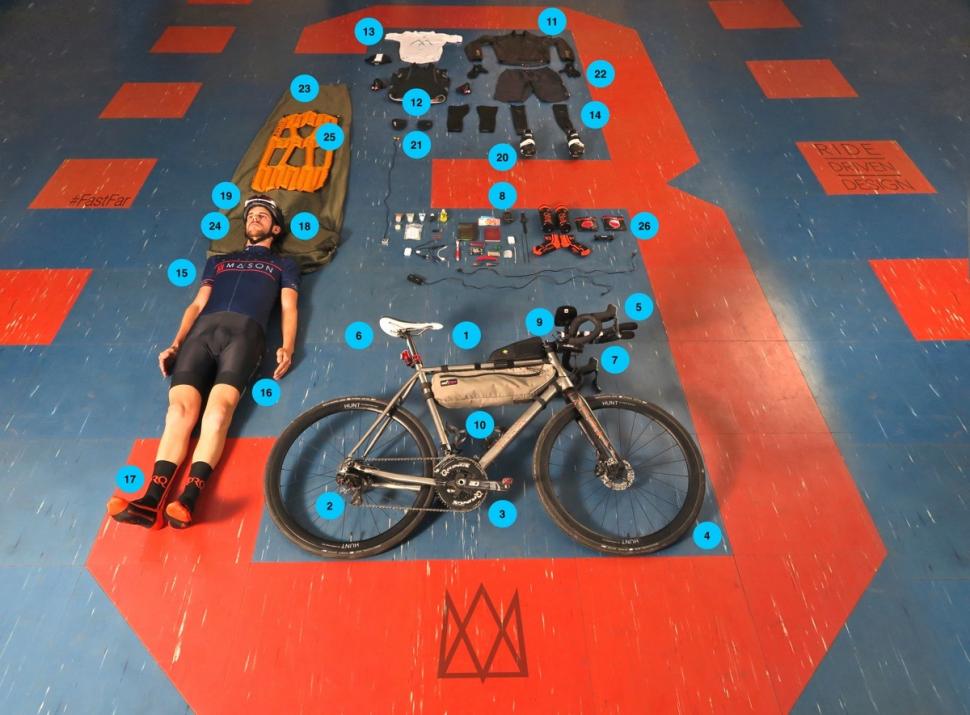
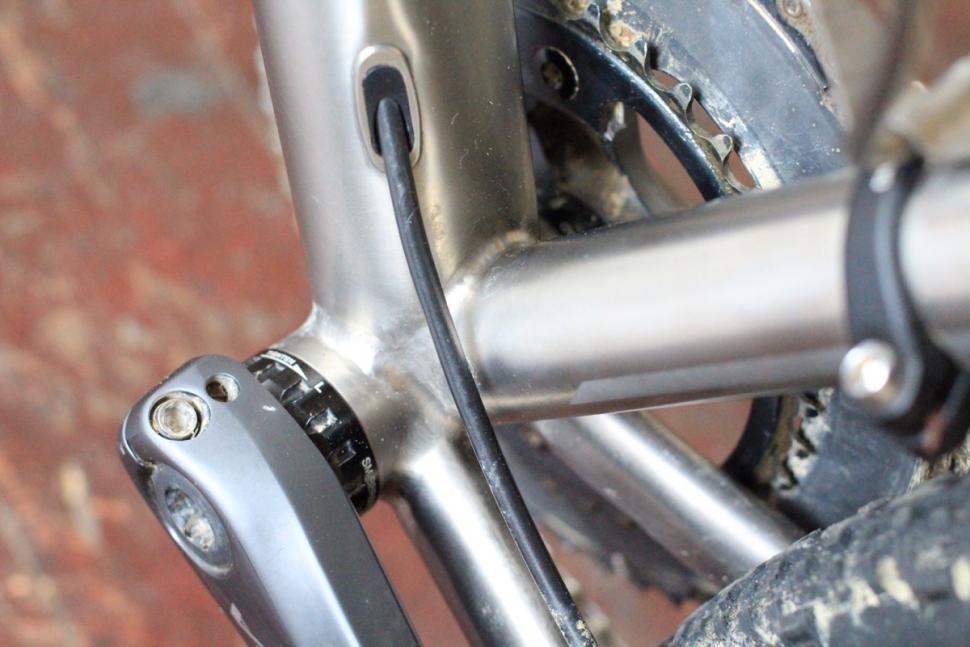

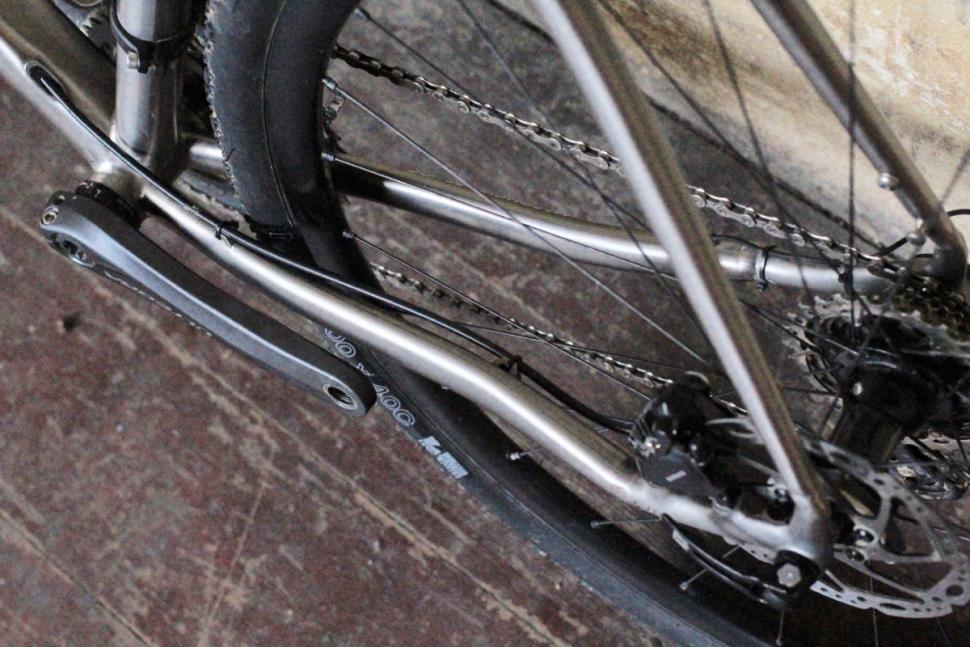

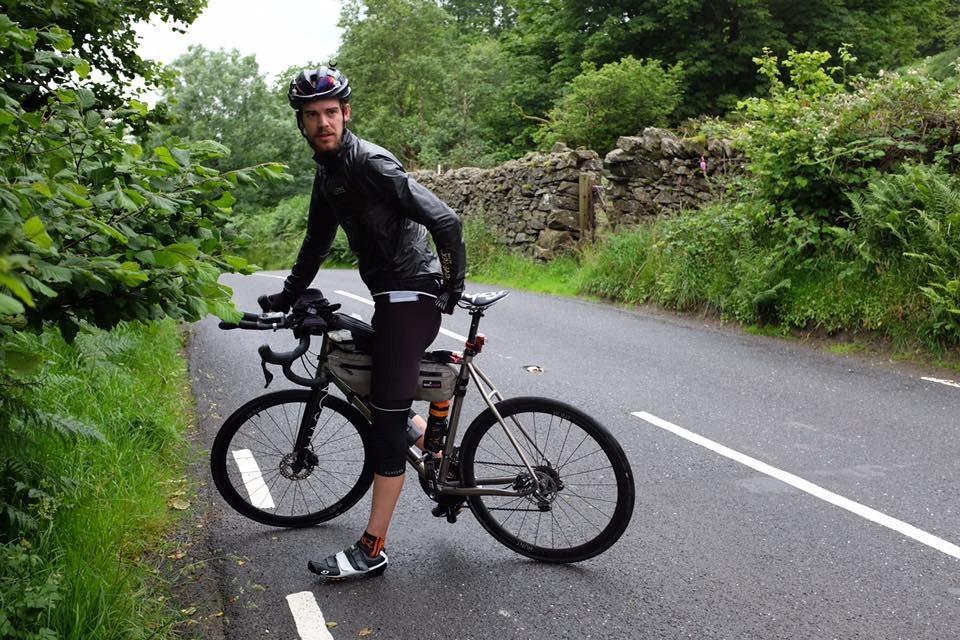
Add new comment
9 comments
Re training -regular 200k rides will get you there as a participant (ideally sat and Sunday). Throw in the odd 300k one to understand what that feels like upfront will help, but nothing really prepares you for getting up on day x and doing it all again.
I'd love to know what Josh does as a winner.
Re lycra - that's fine everywhere, even in albania.
Re the bagy shorts - I wondered about those too - could be for sleeping in?
Re Di2 - I used mechanical last year, and built a bike for this year with di2 (pulled out in Feb tho). it's hard to change gear when your hands are going numb. The charger is really really light.
Id still use a dynamo, but many just carry a rechargeable usb battery and charge it when eating.
Unmentioned baggy shorts! Ditched? Possibly not, as I'm sure there are areas of the race where the lycra shorts look would be a no-no?
But he won last year on Di2. As he says makes gear changes (especially front) that bit easier when you're tired. And 18 hour riding sessions mean you get REALLY tired (I imagine).
I can't believe he doesn't use a mechanical group. Carrying that charger up and down hills is another boat anchor. Those self-adhesive tube patches don't work well either.
I'd like to know how he deals with charging the phone and iPod. I'm guessing he's sleeping ruff most of the time and I didn't notice a dino hub ?
I really liked this article. I'd love to read another one about his training regime. How does anyone prepare for such and enormous undertaking?!
Most people place WAY too much emphasis on the riding bit. That's never usually the problem, it's the "other stuff". Packing/unpacking, knowing when and where to sleep & eat, route planning and also being OK with being, cold, wet, tired, smelly and actually quite bored.
I've done chaperone / guiding work for a few multi-day rides and in the run up to it there's always loads of talk about gear ratios, training, hours & miles ridden but the participants discover very quickly that it's all largely immaterial. It's the off-bike bits that matter. How you recover, the little time-saving bits and pieces that you learn about where to pack your most used items, what food works for you (very few people can survive or flourish on energy drinks and gels alone) and just efficient use of time.
When you stop for food, you also plug in anything that needs charging (even if it's just for 10 minutes), do a map check and go to the loo. Because doing all those things separately means more time stopped and less time riding.
Hi
We'll publish a Q&A with Josh Ibbett on road.cc in the next day or two.
It'll cover his approach and how he's been preparing in general terms. Hopefully, that'll be of interest.
I'll tell you now, he didn't have the ideal preparation in that he was bitten by a dog and had to have a few stitches, but he's going into the Transcontinental feeling positive.
I dont think i could survive with just a bivy and no sleeping bag. I get cold (relative) quickly after being hot from riding, I suppose it doesnt matter if your only laying down for upto 3 hrs at a time though